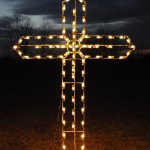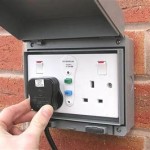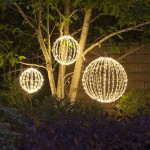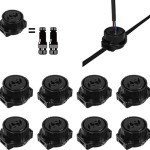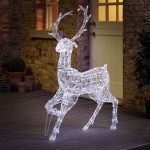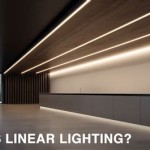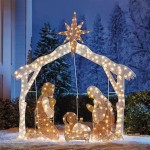Outdoor Landscape Lighting Design
Outdoor landscape lighting design is an art form that blends functionality with aesthetics, transforming outdoor spaces into inviting and captivating environments. It involves carefully planning and installing lighting fixtures to illuminate walkways, highlight architectural features, accentuate plants and natural elements, and create a desired ambiance. Effective landscape lighting goes beyond simply providing illumination; it enhances the overall beauty, safety, and usability of outdoor spaces.
Key Elements of Outdoor Landscape Lighting Design
Outdoor landscape lighting design encompasses several key elements that work together to achieve a cohesive and impactful outcome. These elements include:
1. Lighting Types
There are various types of outdoor lighting that serve different purposes. Some common types include:
- Ambient Lighting: Provides general illumination for the entire space, creating a sense of safety and visibility.
- Accent Lighting: Highlights specific features, such as trees, sculptures, water features, or architectural elements.
- Task Lighting: Illuminates specific areas for activities such as reading, dining, or working.
- Path Lighting: Guides pedestrians along walkways and pathways, ensuring safe navigation.
- Security Lighting: Deters crime by illuminating dark areas and providing visibility.
2. Fixture Selection
Selecting the right fixtures is crucial to achieve the desired lighting effect. Factors to consider include:
- Style: Choose fixtures that complement the architectural style of the home and landscape.
- Material: Durable materials such as copper, bronze, or stainless steel are ideal for outdoor use.
- Lumens: The amount of light output determines the brightness of the fixture.
- Color Temperature: Measured in Kelvin (K), color temperature influences the color of the light emitted. Warm white (2700-3000K) is often preferred for a cozy and inviting atmosphere, while cool white (4000-4500K) provides a brighter and more functional light.
3. Placement and Direction
Strategic placement and direction of lighting fixtures are essential for maximizing their impact. Proper placement creates balance and highlights desired features while minimizing glare and light pollution.
- Uplighting: Directing light upwards to illuminate trees, walls, or architectural features.
- Downlighting: Directing light downwards to illuminate walkways, patios, or seating areas.
- Sidelighting: Lighting objects from the side to create shadows and depth.
- Backlighting: Illuminating objects from behind to create silhouettes and a dramatic effect.
Benefits of Outdoor Landscape Lighting Design
Well-designed outdoor landscape lighting offers a multitude of benefits, enhancing the overall experience of an outdoor space. These benefits include:
1. Enhanced Aesthetics
Outdoor lighting transforms outdoor spaces into captivating and inviting environments. It accentuates architectural features, enhances the beauty of plants and natural elements, and creates a welcoming ambiance. By highlighting key features, lighting can enhance the visual appeal of the landscape and create a sense of depth and dimension.
2. Improved Safety and Security
Lighting can significantly improve safety and security by illuminating walkways, pathways, and dark areas, reducing the risk of accidents and deterring crime. Well-lit outdoor spaces provide visibility and deter potential intruders, creating a safer environment for both residents and guests.
3. Increased Functionality
Outdoor lighting extends the usability of outdoor spaces beyond daylight hours. With proper illumination, homeowners can enjoy outdoor activities such as dining, entertaining, or relaxing in the evening. Task lighting can facilitate specific activities, while path lighting ensures safe navigation.
Key Considerations for Outdoor Landscape Lighting Design
When planning outdoor landscape lighting, several key considerations are essential to ensure a successful outcome. These considerations include:
1. Energy Efficiency
Selecting energy-efficient lighting fixtures and bulbs can significantly reduce energy consumption and lower electricity bills. LED lights are highly efficient and long-lasting, offering a sustainable and cost-effective option.
2. Maintenance and Durability
Choosing durable fixtures and materials designed for outdoor use is essential to minimize maintenance requirements and ensure long-term performance. Look for fixtures with weatherproof seals and rust-resistant materials. Regular cleaning and maintenance will help ensure the longevity of the lighting system.
3. Light Pollution
Excessive or poorly directed lighting can cause light pollution, negatively impacting the environment and wildlife. Consider using shielded fixtures to minimize glare and light spillage, and choose fixtures with appropriate color temperatures to avoid disturbing nearby residents.

Outdoor Landscape Lighting Design Tips Ideas Environmental Designs

68 Inspiring Landscape Lighting Ideas For Every Outdoor Space Design Front Yards

25 Best Landscape Lighting Ideas And Designs For 2024

How To Choose A Landscape Lighting Design That Fits Your Home

Designing A Landscape Lighting System Ideas Advice Lamps Plus

Outdoor Landscape Lighting Design Tips Ideas Environmental Designs

Designing A Landscape Lighting System Ideas Advice Lamps Plus
Outdoor Lighting Ideas 10 Designs Architecture Design

Outdoor Landscape Lighting O Grady S Sterling Va

The Secret To Outdoor Lighting Design Lightstyle Of Tampa Bay
